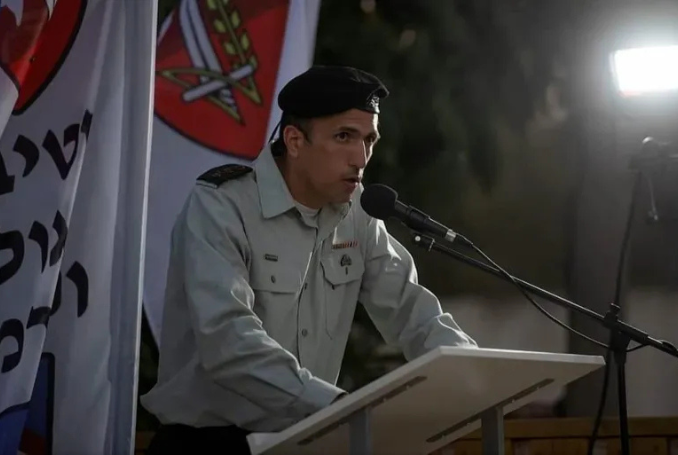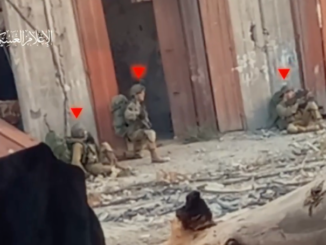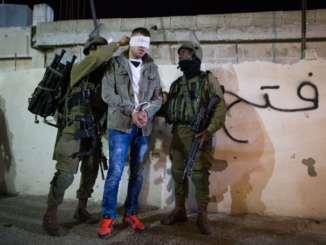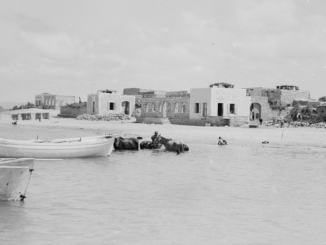
By Palestine Chronicle Editors
Daqsa’s 401st Brigade is only one of several brigades that have been assigned this task. The much-celebrated Israeli colonel was in Jabaliya to assess the progress of the fight.
At first, Israeli media, citing military sources, said that Colonel Ihsan Daqsa was inside his tank, somewhere in Jabaliya, when he was killed by the Palestinian Resistance in northern Gaza.
The story, reporting on the killing of the highest-ranking Israeli military official since the start of the war, began changing. Later, Israeli media reported that Daqsa was killed 20 meters or so away from his vehicle.
But why did the story change? It is plausible that the top Israeli military officer, along with three other officers, was killed while on foot. It is also plausible that the story was altered to indicate that Daqsa died, like top Hamas leader Yahya Sinwar, while fighting until the last breath.
Sinwar was killed in Tel Al-Sultan, a neighborhood adjacent to the southern city of Rafah. The way in which Sinwar was killed has already become a legend, perhaps unparalleled in the history of Palestinian Resistance to British, Zionist colonialism, and the Israeli occupation of Palestine.
With a nearly severed hand, out of bullets and hand grenades, depleted and on the verge of death, Sinwar grabs a piece of wood and tosses it toward the Israeli drone that came to ensure his demise.
In this video, Al-Qassam fighters are seen clashing with Israeli forces within a compound ambush west of Jabaliya camp, in northern Gaza. pic.twitter.com/2TjrzW4fMm
— The Palestine Chronicle (@PalestineChron) October 20, 2024
Interestingly, Daqsa, the commander of the 401st Brigade also fought in Tel Al-Sultan, and his troops must have engaged in direct clashes with Sinwar and his fighters.
Later, he was transferred to Jabaliya to lead a war of extermination against any living soul in a small refugee camp in northern Gaza whose size hardly equates to that of a single neighborhood in a proper city.
The Jabaliya Genocide
Jabaliya remains undefeated. The Israeli army tried to invade it twice before and failed. On October 9, Israel carried out its most violent attempt to capture Jabaliya in order to force the population of the whole area to make a choice between starving to death, dying under the weight of Israeli bombs or accepting their ethnic cleansing to the south.
Daqsa’s 401st Brigade is only one of several brigades that have been assigned this task. The much-celebrated Israeli colonel was in Jabaliya to assess the progress of the fight.
It is only rational to assume that Daqsa and his company – top commanders from the 162nd Division and the 52nd Battalion – were visiting parts of the area that they must have deemed the safest. They were wrong, of course. As Israel has proved that there is no safe place anywhere in Gaza, the Palestinian Resistance continues to demonstrate that there is no safe place for the Israeli military in Gaza as well.
Those who accompanied Daqsa on his mission were also injured, some believed to be in critical condition.
Daqsa is the fourth colonel to be killed since the start of the war. According to Israeli media, his replacement is Lieutenant Colonel Meir Biederman. Will he succeed in finishing the bloody job that Daqsa and others have started? Unlikely.
The destruction of an Israeli Merkava tank with a highly explosive device east of Jabaliya camp, north of the Gaza Strip.
Translation note 00:51
From Jabalia camp, we dedicate this operation to our fighting Sheikh, leader Yahya Sinwar “Abu Ibrahim” who ascended advancing… pic.twitter.com/4LtqVTJRg6
— The Palestine Chronicle (@PalestineChron) October 20, 2024
No Safety for Invaders
Finally, something must be said about the timing of the killing of the colonel and the wounding of the other officers. Some in Israel had expected or perhaps hoped, that the killing of Sinwar would have been the beginning of the end of the resistance in Gaza. Today’s announcement indicates that the opposite is true.
Much can be said about why that is the case, for example, the fact that the Gaza resistance is not driven by the zeal of a single leader, but by the resistance’s own dynamics as a direct response to Israeli oppression throughout Palestine.
But it must also be noted that the model of resistance underway in Gaza does not follow a pyramid-like hierarchy. Instead, it is situated within a decentralized military structure where decisions are made by local commanders on the ground, and if needed, by small bands of fighters that can consist of as few as three.
Fighting to the End – A Hero’s Death Puts More Iron in the Soul
Some Palestinian analysts say that the killing of Daqsa is the resistance response to the killing of Sinwar. This indeed might be the case. However, for Palestinian fighters in the streets of Jabaliya, killing a top colonel or a lowly invading soldier is all part of a protracted war that can only end with the retreat of the invaders.
(The Palestine Chronicle)









In the near future, there will be more Sinwars to inflict further nightmares upon the Zionists. This was a proper response from the resistance, and I’m expecting more blow to come. The whole world has left Jambalaya facing the brutality of the Zionists. But the resistance is writing another glorious page in its book of “somoud”. I wish I had words that can describe how much I admire these legends.
Sinwar like many other resistance front martyred leaders, Seyyed Hassan Nasrollah, Foad Shokr, brigadier Qasem Sloeymani and more did not hide but fight right into the eyes of the zionists in the battle ground.
This is no more the issue of Sonni or Shiat, but a common major issue forall Muslims and the whole world. We have to fight the evil zionists with every means possible.Zionists supremacy is a danger to the whole world.